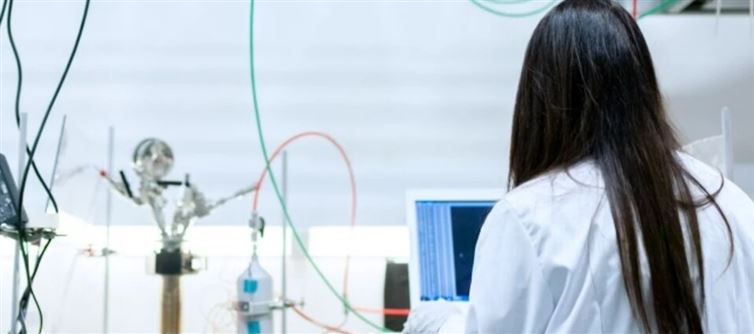
Chinese researchers claim to have created a laser that can see minute details, including minuscule letters, at a greater resolution from a distance of 1.36 kilometers.
Researchers from the university of Science and technology of china tested a new laser-based system that they claim can detect minute features from almost a mile away in a study that was published in the journal Physical review Letters. Instead of concentrating on the image itself, the researchers adopted a novel strategy based on how light strikes a surface. We refer to this technique as active intensity interferometry. The Chinese researchers showed that the technique may be applied to the detection of non-self-luminous objects, such as stars.
The researcher tested a device that fires eight infrared laser beams across a predetermined distance, according to Science Alert. The intensity of the light reflections was then recorded using two telescopes. Researchers said that by examining differences between the data from the two telescopes, the image may be recreated by carefully calibrating the eight laser beams that illuminate the subject.
"Through outdoor experiments, we have successfully imaged millimeter-scale targets located at 1.36 km away, achieving a resolution enhancement by about 14 times over the diffraction limit of a single telescope," the researchers said in their article.
The Chinese researchers disclosed that their configuration allowed them to read letters with accuracy at a resolution of 3 mm, which is less than a pencil's width. According to them, that is a 14-fold increase in spatial resolution above what could be accomplished with only one telescope.
The researchers did point out that there are still certain obstacles to be addressed, such as the requirement for a direct line of sight to the object. It could not be appropriate for surveillance situations where stealth is necessary because the target needs to be lighted by lasers.
The team stated that they also intend to enhance the laser's control to make it easier to steer. Additionally, the researchers might implement artificial intelligence (AI), which might aid in more precise image reconstruction.
Researchers from the university of Science and technology of china tested a new laser-based system that they claim can detect minute features from almost a mile away in a study that was published in the journal Physical review Letters. Instead of concentrating on the image itself, the researchers adopted a novel strategy based on how light strikes a surface. We refer to this technique as active intensity interferometry. The Chinese researchers showed that the technique may be applied to the detection of non-self-luminous objects, such as stars.
The researcher tested a device that fires eight infrared laser beams across a predetermined distance, according to Science Alert. The intensity of the light reflections was then recorded using two telescopes. Researchers said that by examining differences between the data from the two telescopes, the image may be recreated by carefully calibrating the eight laser beams that illuminate the subject.
"Through outdoor experiments, we have successfully imaged millimeter-scale targets located at 1.36 km away, achieving a resolution enhancement by about 14 times over the diffraction limit of a single telescope," the researchers said in their article.
The Chinese researchers disclosed that their configuration allowed them to read letters with accuracy at a resolution of 3 mm, which is less than a pencil's width. According to them, that is a 14-fold increase in spatial resolution above what could be accomplished with only one telescope.
The researchers did point out that there are still certain obstacles to be addressed, such as the requirement for a direct line of sight to the object. It could not be appropriate for surveillance situations where stealth is necessary because the target needs to be lighted by lasers.
The team stated that they also intend to enhance the laser's control to make it easier to steer. Additionally, the researchers might implement artificial intelligence (AI), which might aid in more precise image reconstruction.




 click and follow Indiaherald WhatsApp channel
click and follow Indiaherald WhatsApp channel